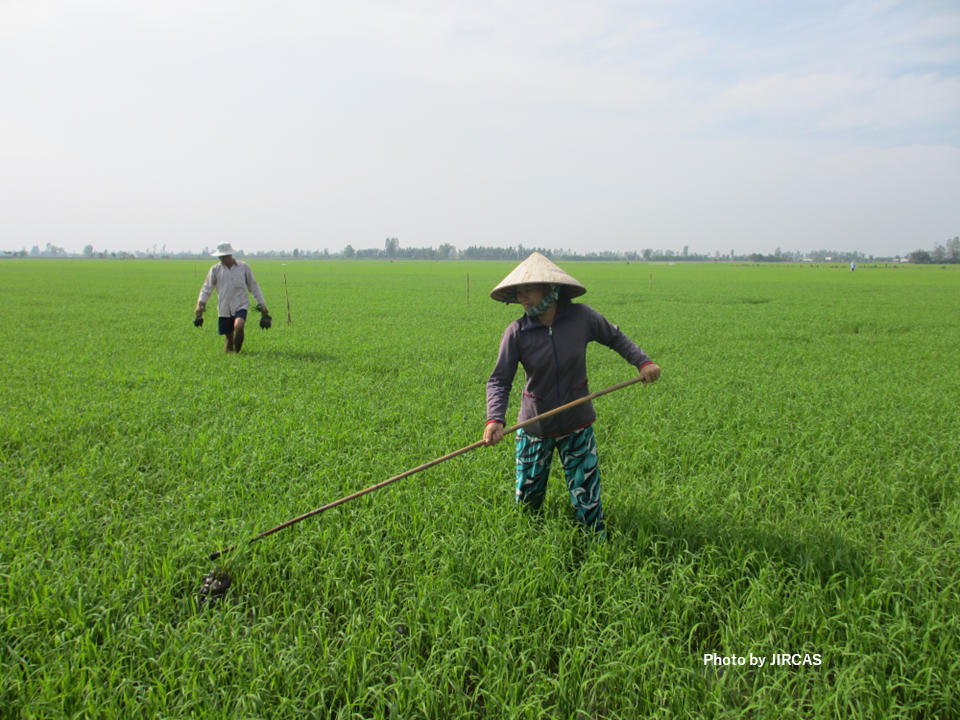Pick Up
914. Dangerous Hot and Humid Conditions for Farmers

914. Dangerous Hot and Humid Conditions for Farmers
At this year's COP28, one of the main items on the agenda is the discussion of measures to address the impact of climate change on human health.
Many parts of the world are experiencing record-breaking temperatures every year, but the danger and frequency of these temperatures are increasing. Even at the same temperature, the degree of humidity in the air makes the human body feel different, and working outdoors on a particularly hot and humid day can be physically demanding.
When it is hot, people cool themselves by losing excess body heat through perspiration. However, when the air is humid, evaporation efficiency is reduced, leaving us with no choice but to endure uncomfortable heat and humidity. The impact of extreme weather on people varies according to socioeconomic factors and occupational patterns, with the most vulnerable segments of society bearing the heaviest burden.
Residents of tropical and subtropical agricultural areas, deltas, and coastal regions are exposed to particularly high rates of heat and humidity. Here is an overview of a paper that examines the number of dangerously hot and humid days that workers in agricultural areas, including these regions, face during the growing season.
The research team quantified the number of extremely hot and humid days during the growing season using daily maximum wet bulb temperature data from 1979-2019, growing calendars by region and crop, and acreage data for 12 crops. The wet bulb temperature, which is measured by air temperature, water vapor content, and wind conditions, is considered to be 30°C, which is unsuitable for labor-intensive farming operations that require mostly outdoor work, and the real feel temperature during farming operations is high. The study found that the real-feel temperature during agricultural work is high and that farmers should be kept at a safe wet-bulb temperature of 27°C or lower.
At the same time, the study found that many major agricultural regions already face climates above Tw27°C for more than three months of the year. These include the Amazon and northern Colombia, parts of Mexico including the Red Sea and Persian Gulf coasts, and much of Malaysia and Indonesia. The African countries of Senegal, Ivory Coast, Nigeria, Cameroon, and the northern region of Australia also experience extreme weather with temperatures above 27°C for more than two months of the year.
In terms of crops, farmers are most likely to be exposed to extreme climatic conditions in rice and corn growing areas, two of the world's leading staple crops. The study found that during the period 2001-2019, the likelihood of exposure to hazardous hot and humid conditions during the growing season of both crops increased 1.8 times for rice and 1.9 times for maize compared to the period 1979-2000. Bangladesh had the highest number of hazardous days for farmers at 60, followed by the Mekong Delta in Vietnam, the Irrawaddy Delta in Myanmar, Indonesia, Malaysia, Mexico, and the coastal areas of the Amazon, where farmers are forced to work in hazardous weather conditions. In the second most common corn growing region, people were found to be working in harsh conditions in Pakistan, the Mekong Delta, northern Colombia, Venezuela, the Philippines, and coastal areas of Mexico and Iran. Other significant impacts were observed in sorghum, soybean, potato, millet, and yam cultivation.
Extreme weather conditions, which are becoming more frequent each year, are likely to make agricultural work more difficult for workers. Extreme heat and humidity can lead to reduced productivity, lower incomes due to shorter working hours, and higher prices for agricultural products. Studies like this one, which clarify and quantify the realities of building sustainable food systems and ensuring food security, provide important information for policymaking.
Reference
Connor D Diaz et al 2023 Environ. Res. Commun. 5 115013
DOI 10.1088/2515-7620/ad028d
https://iopscience.iop.org/article/10.1088/2515-7620/ad028d
Contributors: Solongo TUMUR and IIYAMA Miyuki (Information Program)
